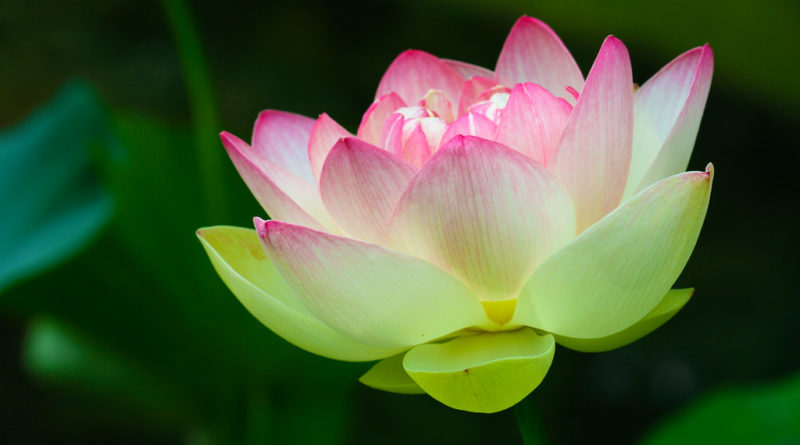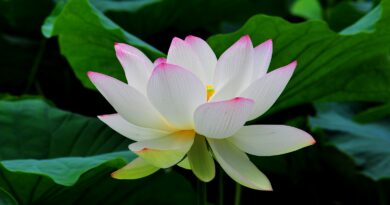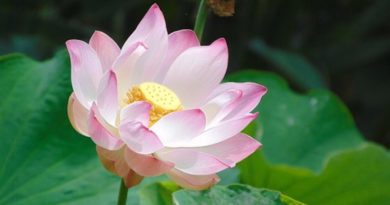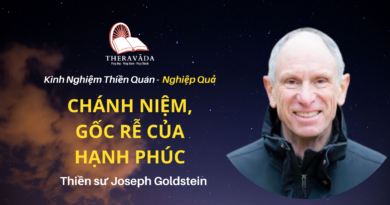DHAMMA PADETHA – 33. THE CORRECT WAY OF PRACTICE TO REACH NIBBANA
DHAMMA PADETHA – THE CORRECT WAY OF PRACTICE TO REACH NIBBANA
The Buddhists wish to live happily in this life as well as in future existences and reach nibb±na. That is why they practise d±na, s²la, samatha and vipassan± as much as possible. Happiness in this life and in future births is not true happiness. They also know that, that happiness is mingled with suffering. Each time they do d±na, s²la meritorious deeds, they pray that they may realize the peace of nibb±na.
To attain nibb±na, d±na, s²la, samatha merits are not sufficient. They also know that only by vipassan± meditation practice they can reach nibb±na. That is why knowledgeable and wise Buddhists are practising vipassan± meditation during all the time that is available. Those who do not have the time yet are searching for correct ways to practise.
Those who are about to practise vipassan± meditation wish to experience the nature of dhamma rapidly and to make progress quickly. Also wish to realize noble dhamma quickly. That is why they are searching for the correct ways to practise vipassan±. The correct way to meditate is to practise the four satipaµµh±na meditation.
(1) k±y±nupassan± satipaµµh±na – to be mindful of every bodily action
(2) Vedan±nupassan± satipaµµh±na – to be mindful of sukha, dukkha, upekkh±, three kinds of ved±na.
(3) Citt±nupassan± satipaµµh±na – to be mindful of every mental behaviour (changes of the mind)
(4) Dhamm±nupassan± satipaµµh±na – seeing, hearing etc. to be mindful of the mind-objects.
(1) To be mindful of every bodily action means:
To be mindful of every bodily action such as walking, standing, sitting, lying down, bending, stretching, arising and passing away of the phenomena.
To note every bodily action, there are three types of meditation
(a) sitting meditation
(b) walking meditation
(c) meditating on miscellaneous detailed daily actions
(a)Sitting meditation means:
Choose a quiet and peaceful place and sit down cross-legged or folding your knees. Keep your back and head erect and close your eyes. Focus your attention attentively on the abdomen. When inhaling, note the tension and movement of the air that forces up step by step, the rising of the abdomen and note mentally and attentively ‘rising.’
When exhaling, the abdomen falls, falling step by step, note attentively to know the intrinsic nature of the falling movement, note mentally, ‘falling’. When s±madhi ñ±na develops you will observe the tension that forces up and the falling movements passing away step by step, one after another.
(b) Walking meditation means:
When walking quickly, note the movement of left and right foot. When your left leg moves, you must be mindful of the process of the movement step by step without giving any attention to the shape of the foot. In the same manner, when you move your right foot, you must be aware of the movement step by step.
When you walk slowly you must note ‘lifting, placing or dropping’ two notings in one step. As you note lifting you must be aware of the movement of the foot going up slowly, note attentively to discover the process of the movement.
When you walk more slowly, you must note lifting, moving or pushing and placing, three notings in one step. As you note lifting, do not be aware of the shape or form of the foot. Just be mindful attentively to be aware of the movement, in moving upwards. When noting moving of the foot, note the foot that gradually moves forward without being aware of the form or shape of the foot. When noting placing, be aware of the moment that occur as the foot goes down, note attentively to know the process of the phenomena. The form or shape is paññatti. Hence you must not meditate on concept (paññatti). The motion or movement is reality (paramattha). Therefore, it must be meditated.
Motto: Eliminate paññatti and be mindful of paramattha.
As concentration insight develops you begin to realize that lifting and pushing become light as it moves on and placing becomes heavy as it goes down. When you reach knowledge of dissolution (bhaªga ñ±na) you will discover that the phenomena of lightness and heaviness keep disappearing rapidly.
(c) Noting or being mindful of miscellaneous detailed daily activities.
They are sitting, standing, bending, stretching activities. While sitting, be mindful of the movement attentively as the body goes down gradually without being aware of the form or shape of the body. Be sure that the mind is attentive to the entirety of the process and make a mental note ‘sitting’. When standing up also be aware of the movement attentively as the body rises gradually, not being aware of the shape of the body.
As your s±madhi ñ±na or concentration insight develops you will realize that while noting sitting, the body becomes heavy and when standing it becomes lighter as it goes up. When your s±madhi ñ±na reaches bhaªga ñ±na you will discover that heaviness and lightness disappear rapidly one after another.
When you are bending your arm, ignore the shape of the arm and be aware of the movement of the arm that slowly rises towards the upper part of the body. Focus to know and note directly and precisely ‘bending’ ‘bending’. When you stretch out your arm again, ignore the shape of the arm and just be mindful of the movement that goes out towards the lower part of the body gradually. To be aware of the movement, note attentively “stretching, stretching”.
As you gain concentration (s±madhi) ñ±na, you will perceive that as you bend, it becomes lighter and lighter, and when you stretch out, it becomes heavier as it goes down. As your s±madhi deepens and reaches bhaªga ñ±na you will realize that the phenomena of lightness and heaviness vanish speedily one after another.
(2) To be mindful of sukha, dukkha, upekkha, three kinds of vedana
When you meditate sukha, dukkha and upekkh± ved±na you will experience dukkha ved±na first and foremost. To overcome dukkha ved±na is the main factor.
When aches and pains, dukkha ved±na arise while meditating, focus your mind right on the ved±na. You must be careful not to keep your body taut and your mind tense and worry about the disappearance and appearance of the ved±na. Special care must be taken.
Focus your mindfulness right, on the ved±na and contemplate whether the pain is only on the flesh, on the skin or up to the veins, or reaches up to the bones, so as to know the magnitude and nature of the pain, and note attentively, “paining, tingling, throbbing, aching” and so on.
When s±madhi ñ±na deepens, you will discover, as you note four or five times, the pains, aches and tingling sensations increase. After reaching the peak, it lessens or eases again. Although it eases, you must not be lax in your mindfulness meditation but continue noting. If you continue noting four or five times, you will realize that it lessens one after another.
As you continue mindfulness meditation, your concentration s±madhi ñ±na become stronger, and when you focus your noting mind on the ved±na attentively, you will realize that the paining, tingling and aching increases more and more with each noting. But when it lessens also, the ved±na, eases with each noting.
When your mindfulness meditation is continuous, your s±madhi ñ±na becomes more mature and as you focus your noting mind directly on the ved±na attentively you will perceive that you note once and the ved±na passes away once.
When your concentration (s±madhi) ñ±na becomes stronger and reach bhaªga ñ±na, as you note attentively once, ved±na disappears once. Moreover, you will also discover that the noting mind also disappears. Thus ved±na is impermanent, the conscious mind is also impermanent, (anicca). Because they disappear at a great speed it seems to oppress you, (dukkha). You are unable to control the disappearance and oppression by any means, which is anatt±. They happen of their own accord. Thus you perceive the three characteristics,
(3) To be mindful of the ever changing mental activties.
To be able to realize pleasant and unpleasant consciousness, happiness, sadness etc. you must contemplate attentively the mind that occurs with these consciousness. During sitting meditation or walking meditation, if you are thinking, make a mental note ‘thinking”. If you are planning, note ‘planning’. As soon as you note ‘thinking”, ‘planning’, you will realize that they pass away swiftly.
It is observed that thinking and planning are passing away rapidly and are impermanent, the noting mind is also transient, (anicca). Because they seem to oppress you by their disappearance at a great speed, it is dukkha. You are unable to prevent these occurrences which take place of their own accord, there is no self (anatt±). Hence, you perceive the three lakkhan±s.
(4) To be mindful of the nature of dhamma, seeing, hearing etc.
When you practise mindfulness meditation you look at a person without discriminating whether the person is male or female. You must be mindful of just ‘seeing’ and note ‘seeing…seeing’.
As your concentration advances to bhaªga ñ±na you will perceive, while noting “seeing, seeing”, the disappearance of the visible object one by one, and also the rapid vanishing of the eye consciousness. The visible object is impermanent and the eye consciousness is also impermanent, i.e., anicca. Because of the speedy disappearance, it seems to oppress you, i.e., dukkha. You cannot control or prevent the disappearance by any means, they happen of their own accord, there is no self, i.e., anatt±. Thus you realize the three lakkhan±s.
When you hear a sound while meditating do not discriminate whether it is good or bad, not wishing to know or imagine. Be mindful just as you hear the sound and contemplate ‘hearing’ ‘hearing’.
As your concentration (s±madhi) ñ±na sharpens and reaches bhaªga ñ±na, while noting ‘hearing hearing’, you will realize that the sound disappears one by one, the ear consciousness also disappears one by one.
In the same manner when you contemplate with correct method, the smell, taste, touch, you will perceive anicca, dukkha, anatt±, the three lakkhan±s.
Consequently, by practising mindfulness meditation correctly and perceiving anicca, dukkha, anatt±, the three lakkhan±s, you will become ariya puggala such as sot±panna etc., and according to your perfection or p±rami, realize nibb±na.









